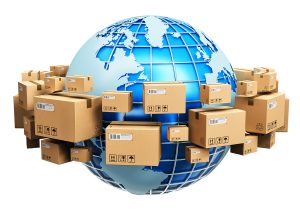Will a Drone Deliver Your Next Purchase?

Amazon insiders have proven their autonomous delivery drones are up for the job — delivering an Amazon Prime Air package to a customer in December just 13 minutes after placing the order. And the retail giant isn’t the only company developing supply chain drone technology: Walmart engineers are developing drones to check warehouse inventory and Google began employing drone technology for deliveries in Australia in 2014.
So, are drones the future of distribution? That certainly looks to be the case. Drones will likely play at least some role in the supply chain in the not-too-distant future.
Is the age of drones upon us?
Since Amazon made its first U.S. Prime Air delivery, how quickly is this type of fulfillment catching on? The technology is ready, but regulations are not yet in place in the United States for delivery drones. But the Federal Aviation Administration slowdown isn’t stopping Amazon executives from setting their sights even higher: With innovations like their proposed “flying warehouse,” an airborne fulfillment center, technology would enable even faster drone deliveries in specific areas.
Down-to-earth drone perspective
 Are these pie-in-the-sky developments feasible — or even worthwhile — for the consideration of other supply chain insiders? Even with regulatory bodies putting things on hold, drones look to be the next disruptive supply chain technology. Drones have the potential to speed up delivery while reducing logistics costs, making them a boon for supply chain management professionals. And with major monetary investments from behemoths like Amazon, Walmart, and Google, supply chain insiders aren’t likely to abandon the idea of warehouse and delivery drones. As such, wise supply chain executives would do well to start educating themselves on drone technology, challenges, and ways it can apply to their logistics.
Are these pie-in-the-sky developments feasible — or even worthwhile — for the consideration of other supply chain insiders? Even with regulatory bodies putting things on hold, drones look to be the next disruptive supply chain technology. Drones have the potential to speed up delivery while reducing logistics costs, making them a boon for supply chain management professionals. And with major monetary investments from behemoths like Amazon, Walmart, and Google, supply chain insiders aren’t likely to abandon the idea of warehouse and delivery drones. As such, wise supply chain executives would do well to start educating themselves on drone technology, challenges, and ways it can apply to their logistics.


